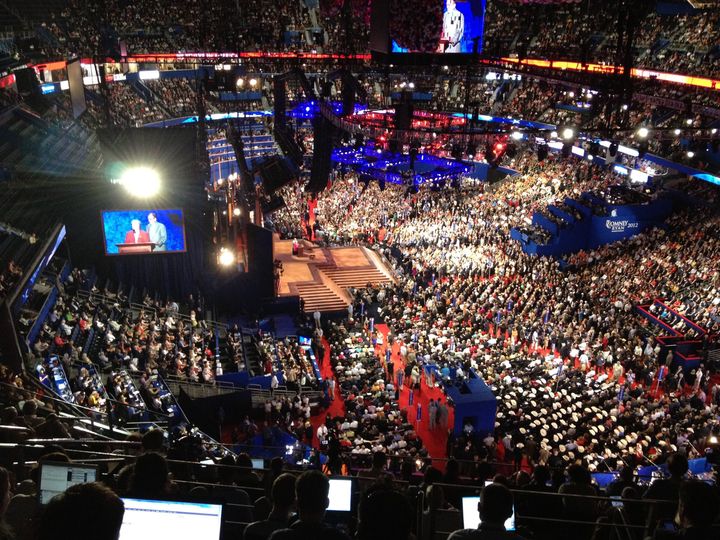
The recent political conventions were much more than marathon spectacles; they were fertile breeding grounds for ongoing political engagement and activism. As exhaustive as it was, the television coverage showed only a fraction of the action. While the cameras and mics were focused on the carefully crafted and rehearsed speeches on the big stage, interactions that could have big implications for the future of the parties were happening not in smoky back rooms, but in every public space of the venues.
Political campaigns demand levels of trust and commitment that are best generated face-to-face. Humans respond deeply and profoundly to the unique chemistry of community that arises when we gather together.
There are some who say that eliminating gatherings is one of the primary benefits of the electronically enabled world. They have some strong arguments, including spreadsheets that detail travel costs and case histories of "Meetings Gone Wild." But their advice is faulty.
Humans are social animals, with social brains. As great a social medium as Facebook is, it pales when compared with face-to-face. We are wired to perceive an amazing range of gestures, postures, facial expressions, tones of voice, pheromones, even subtle changes of the iris. We respond powerfully to all these factors.
Science is identifying many of the mechanisms behind the magic of meetings. Research indicates that positive face-to-face interactions produce the neuropeptide oxytocin. Oxytocin has been shown to interact with dopaminergic reward circuits to increase affiliative behavior and to inhibit mistrust, increasing our motivation towards socially cooperative behavior. (1)
This science confirms the age-old conventional wisdom that good things happen when people congregate. Our forefathers and foremothers were right on target when they advised us to offer hospitality to strangers. Breaking bread with someone is almost always a good move.
Attendees at conventions built their networks through the connections they made with others at the meeting. They came away with a sense of purpose and community, shared values and goals and knowledge they had gained from others.
This activation of individuals translates into enormous, lasting value for the political parties. Scott Heifernan, a co-founder of Meetup.com, speaks about how when people gather the first thing that they say is the word "let's." They encourage and energize each other to take action.
The sum of the positive, mutual decisions to act made in the buffet line for breakfast throughout a convention, in and of itself, is probably a positive return on the investment in the event. Add to that the probability that a candidate for a future was discovered, mentored and nurtured at a convention and you can start to appreciate how much of the real action happens off camera.
Just as social media tools can't replace face-to-face interaction, meetings today can't deliver their full potential without complementary social media. Once people have forged a bond at a meeting, they can build on that trust as they continue to communicate via digital media.
Convening in the same place may not always be as convenient as clicking into an online gathering, but it is almost always a more complex and more rewarding experience. We are tribal beings, designed and inclined to get a contact high from being around other people. In business, as in romance, people who say "we can't go on meeting like this" threaten the future and vitality of relationships and effective cooperative action.
*********
1. Skuse, D.H. and Gallagher, L., "Dopaminergic-neuropeptide interactions in the social brain" in Trends in Cognitive Science (2009) January, 13(1) 27 - 35.